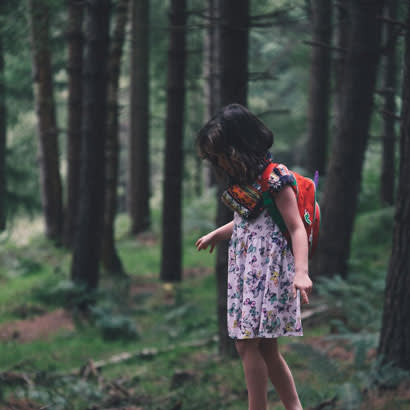
Kids are natural learners, but the concept of conservation can be difficult to grasp. While kids know that littering gets them in trouble, they don’t always understand why it’s important to throw away trash or turn off the faucet. By teaching conservation through fun, hands-on activities, parents and teachers can introduce complex concepts in age-appropriate, easy-to-understand ways.
HomeAdvisor defines conservation as “using Earth’s natural resources in a way that is not wasteful and making sure that human beings can get what they need without destroying the habitats of plants and animals.” If you’re looking for a great conservation-themed lesson to share with kids, spend an afternoon doing one of these fun activities.
1. Go on a Litter Hike
One single piece of litter isn’t that bad, is it? Kids might not think much of dropping trash on the ground, especially in the woods where there aren’t trash cans around. But if everyone takes that mindset, nature becomes a lot less beautiful.
Pick a popular hiking trail and take a walk armed with trash bags and rubber gloves to collect litter along the way. Make observations about the trash you collect. Does it look old and weathered or newly deposited? Is it decomposing or just breaking into smaller pieces? Use this opportunity to discuss how litter isn’t just unsightly, it also hurts the earth, plants and animals.
2. Build a Compost Bin
The average person creates 4.4 pounds of trash every day, according to the EPA. However, not all of that has to go to the landfill. Organic waste from food scraps can be composted to reduce trash headed for the landfill.
Teach kids about composting by building a compost bin. You can get ideas for different compost bin designs here. You can also check out these 31 DIY compost bin ideas! Discuss what kinds of waste can be composted before setting out on your composting journey. At the end of a week of composting, weigh your household trash. Are you creating more or less trash than average? Discuss other ways to reduce waste sent to the landfill.
3. Survey Neighborhood Wildlife
What kinds of animals live in your neighborhood? Grab a pair of binoculars, a notebook and a field guide and head out for a walk. Ask children to spot as many different species as they can and take note of how common different animals are. Do you see a lot of diversity or a little? Discuss what impacts wildlife diversity and how you can make your neighborhood more wildlife friendly.
4. Create a Pollinator Habitat
This is a great follow-up activity to the wildlife survey. Start with a discussion of insects’ role in the ecosystem and how some bugs help create food and flowers through pollination. Once children understand why pollinators are important, plan a backyard pollinator habitat. As you select plants and design a habitat, discuss how you can support the entire lifecycle of beneficial insects by providing food, water, shelter and nesting areas.
5. Construct a Miniature Watershed
For kids, it can seem like water is an inexhaustible resource. After all, every time they turn on the tap, clean water pours out without fail. Constructing a miniature watershed is a great activity that demonstrates how water is a renewable, but finite resource.
Start by scattering plastic bags, dishes and other waterproof items across a tarp to create a landscape with hills and valleys. Have children spray water over the landscape and observe how “rain” flows over the landscape and collects in depressions to form lakes, streams and wetlands.
Next, add pollution into the picture. Deposit a few drops of food coloring at a point in the watershed before making it rain again. Observe how pollution from a single source affects water throughout the watershed. Discuss different sources of pollution, like factories, farms and individuals, and how people can work together to keep pollution out of waterways.
Teaching kids about conservation when they’re young promotes a lifetime of eco-friendly habits. However, simply explaining concepts is rarely enough to make them stick. By getting kids engaged in hands-on activities like these, you help children understand the true meaning of conservation.

